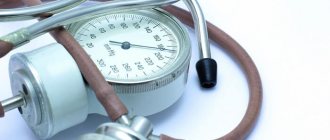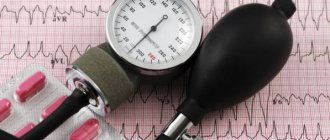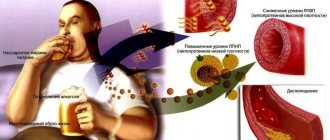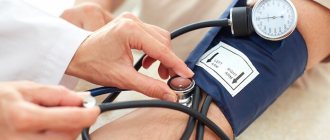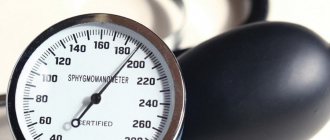Blood pressure is 90 over 70. What does this mean?
Low blood pressure is a common problem for modern people. If one person can easily tolerate a decrease in blood pressure, then for others it is a big problem that disrupts the usual pace of life. After all, all organs and systems of the body suffer, blood circulation is disrupted.
People who have low blood pressure depend on their well-being from environmental weather conditions: they do not tolerate high temperatures, gusts of wind and high humidity.
Main reasons:
- headaches of various nature, dizziness;
- decreased performance, constant desire to sleep;
- the occurrence of shortness of breath and heart pain;
- numbness of the limbs, fainting;
- forgetfulness and emotional instability.
Blood pressure 90/70 during pregnancy
Starting from registration (and this happens at 12 weeks), expectant mothers need to monitor blood pressure readings, which the gynecologist begins by measuring at each visit.
Many people consider a slight decrease in blood pressure during pregnancy to be normal. According to doctors, if the indicators are reduced, but the woman feels well and the tests are satisfactory, this situation does not require adjustment. However, if there is a further drop in blood pressure, it is worth stabilizing the condition.
During pregnancy, hypotension can be recognized by certain signs:
- frequent dizziness;
- dyspnea;
- too frequent bouts of severe vomiting;
- throbbing pain in the back of the head;
- ringing (knocking) in the ears;
- lethargy, drowsiness;
- increased heart rate.
To reduce the factors influencing the development of hypotension, the expectant mother should avoid stressful situations, get enough sleep and lead an active lifestyle.
Poor nutrition and bad habits during pregnancy increase the chance of developing hypotension several times.
Initially, expectant mothers should realize that a special period of their life has come; it is difficult for the body to readjust itself, so some habits should be adjusted. However, moderate physical activity should not be avoided. And the very least you need to adhere to is to systematically visit the doctor and follow his instructions.
Types of hypotension
| Age | Minimum | Maximum | Norm |
| 01.05.2018 | 80 to 55 | 110 by 79 | 94 by 65 |
| 01.06.2013 | 90 to 60 | 115 by 80 | 105 by 20 |
| 20-24 | 108 by 69 | 132 to 83 | 120 by 75 |
| 20-29 | 109 to 71 | 133 to 89 | 121 by 80 |
| 40-44 | 112 by 79 | 137 to 87 | 125 by 83 |
| 45-49 | 115 by 80 | 139 by 88 | 127 by 88 |
What to do if you have low blood pressure? Is it dangerous?
With low pressure, all cells of the body are at risk of oxygen starvation, which can cause a stroke (a sharp transition from low to high values).
This is the most important reason to seek professional help. In general, low blood pressure does not lead to dangerous diseases unless it is at a critical level. It is important to treat hypotension in several stages:
- eliminating symptoms that bother a person;
- eliminating the causes that lead directly to hypotension.
These could be:
- overheating in the sun
- poorly ventilated area
- bad habits
- high physical activity and poor nutrition.
The standard blood pressure norm is 120 over 80, gaps of 20-30 mmHg are allowed. But at different ages of a person, the indicators change.
Blood pressure, pulse difference
First, let’s remember what parameters blood pressure reflects. When moving through the bloodstream, blood exerts a certain force on the walls of blood vessels (arteries), called blood pressure. The intensity of this effect is shown by the numbers recorded by the tonometer. But why are there two indicators?
- The first, “upper” indicator records blood pressure during systole - the moment when the heart filled with blood contracts, the heart valves open, and blood rushes into the arteries. The blood pressure recorded at this moment is called systolic blood pressure (SBP); in everyday life it is called cardiac blood pressure.
- The second value is recorded during diastole, when the heart valves close and the heart muscle relaxes, letting in a new portion of blood, at the same time the blood “released” into the arteries during systole reaches the peripheral vessels and encounters their resistance.
- The concept of pulse difference, or pulse pressure, arose when the influence of this indicator on the prognosis of the development and course of cardiovascular pathologies, especially in people over 55 years of age, was noticed. From the name it is easy to guess that pulse pressure is the difference between higher and lower blood pressure readings.
The level of the “lower” blood pressure indicator depends on the amount of renin, a substance produced by the adrenal glands and affecting the patency and elasticity of peripheral vessels. For this reason, diastolic pressure (DBP) is sometimes called renal pressure.
The normal blood pressure is considered to be 120 per 80 mm Hg. Art. with conditionally permissible deviations in both directions of 20–30 units. It is clear that the pulse difference should normally be 40 units, but it can also deviate depending on the SBP and DBP indicators, as, for example, with a pressure of 90 to 70.
Normal blood pressure by age
Normal blood pressure by age
| View | Characteristic |
| Physiological | Associated with the physical structure of a person. Often found in people who are professionally involved in sports. Appears in healthy people. |
| Pathological | Occurs against the background of infectious diseases. Often caused by hormonal imbalances and stress. Exacerbation occurs in spring and summer. |
In general, low blood pressure is not observed in young people, but there are situations when this disease occurs. If a person leads an overactive lifestyle and devotes himself to sports, then this is a protective reaction of the body to reduce the activity of the heart, thereby increasing its wear resistance. Or, on the contrary, if a person is physically passive, too thin, his performance is reduced, and the result is low blood pressure. Only a specialist can determine the exact cause.
In older people, low blood pressure is the cause of insufficient oxygen supply to the brain, which can later lead to Alzheimer's disease or “senile dementia.”
Pulse and low blood pressure
If a patient with low blood pressure consults a cardiologist, the doctor must first determine the heart rate - pulse.
A heart rate of 80 and a heart rate of 90 beats per minute is normal.
Almost always with low blood pressure the pulse rises, what does this mean? This is due to the fact that the cardiovascular system tries to increase cardiac blood output in this way. If a person tolerates this condition normally, drug treatment is generally not required, since this is a natural reaction of the body. If a rapid heartbeat terrifies a person, then sedatives may be prescribed.
How to recognize: the main manifestations of hypotension
Low blood pressure is accompanied by the following symptoms:
- general weakness;
- cardiopalmus;
- dizziness;
- prostration;
- increased sweating.
With such blood pressure levels, a person’s performance is significantly reduced.
In addition to such manifestations, if the upper pressure drops below 95, then the person’s performance decreases, a feeling of fatigue occurs, which is accompanied by a headache. Postural hypotension is most common among patients with low blood pressure. Main characteristics: feeling of weakness, flashing of black spots in the eyes, worsening of the condition when changing body position from horizontal to vertical. When a person suffers from hypotension and his pulse is 90, then the symptoms include a feeling of anxiety, chest pain, nausea and vomiting.
How to raise low blood pressure?
The main condition for hypotension is moderate physical activity.
Hiking, swimming, gym classes, sports games, and regular morning exercises are recommended. All physical activity should be within normal limits so as not to overload the body, because it needs to increase vascular tone and improve blood circulation to normalize blood pressure. Therefore, you need to avoid overwork. Separately, it is necessary to note the massage procedure. It is recommended to undergo a massage course from a specialist every six months; this will help speed up blood circulation and tone the blood vessels. Every day you can massage yourself at certain points.
Contrast showers, douches, visits to saunas and steam baths have a positive effect on the body. But it is important to note that the body must get used to these procedures gradually so as not to experience stress and thereby not worsen the health condition.
It is also very important to have adequate sleep, at least 8 hours a day; you can sleep during the day, since high weather sensitivity can lead to a state of loss of strength. If you have a headache and your blood pressure has dropped, it is better to contact a specialist promptly.
What to take for low blood pressure?
Before consulting a doctor, it is important to get a clear picture of your blood pressure. To do this, you need to start a diary in advance, in which you enter your blood pressure readings every day in the mornings and evenings with comments on how you feel. This will help the specialist correctly diagnose and prescribe comprehensive treatment. At home, blood pressure can be quickly normalized by drugs that contain caffeine, namely: Citramon, Algon, Acepar, Dopamine. But self-medication is strictly prohibited!
Reasons for decreased blood pressure
Sometimes it is extremely difficult to understand the reasons for the 90/70 indicator. You should consult a doctor so that he can conduct a full examination and make a conclusion. You will need to undergo a series of tests and medical examination.
Causes of hypotension
The question of what this means can only be answered if a certain pathology is identified, without eliminating which it is impossible to equalize the pressure. The causes of low blood pressure may be:
- severe infectious disease;
- heart disease;
- endocrine disorders;
- presence of anemia;
- diseases of the genitourinary system;
- severe blood loss (including during menstruation in women);
- improper use of antihypertensive drugs.
Nutrition at low pressure
If a person leads an incorrect lifestyle, abuses bad habits, and often consumes unhealthy foods, then hypotension will make itself felt. This is why it is so important that food contains as many vitamins and microelements as possible. The main ones are vitamins B and C. Be sure to drink milk, eat eggs, carrots, herbs, fruits, vegetables and seafood. You should eat small meals 4-5 times a day and drink at least 4 liters of fluid per day.
Products that must be present in the diet of a hypotensive patient:
- Grape . Regulates the functioning of the adrenal glands, which are primarily responsible for normal human blood pressure.
- Garlic . Regulates pressure. If it is high, it decreases, if it is low, it increases.
- Lemon . Quickly normalizes the state of health in case of hypotension. Lemon juice improves performance.
- Carrot juice . Improves blood circulation.
- Beetroot juice. Prevents the occurrence of anemia.
- Nuts . In combination with milk, they increase blood pressure due to the terosine content in the composition.
- Licorice root tea . Prevents the production of the stress hormone cortisol.
- Caffeine . Contained in drinks such as coffee, cola, hot chocolate, energy drinks.
- Black chocolate . Quickly puts you in a cheerful state.
Normal or pathological?
Low blood pressure (BP) levels in some cases can be considered by doctors as a physiological norm. This applies to cases where the condition is hereditary. The concept of “normal” for hypotension is determined by a person’s well-being. If he does not feel any discomfort and calmly does housework, then we can talk about physiological hypotension. In this case, a pressure of 90 to 70 is an acceptable value.
In adolescence
Low blood pressure is not typical for boys and girls. But there are several moments when such a level of blood pressure is an acceptable norm. This group of young people includes:
- Men and women who prefer an active lifestyle and engage in professional sports. Hypotension in this case is the body’s physiological response to the physical activity received. The reason for this is a decrease in myocardial contractility, acting as a compensatory reaction.
- People of asthenic physique - tall, excessively thin - often have low blood pressure.
It must be remembered that a small pulse pressure (the difference between the upper and lower blood pressure readings) indicates myocardial congestion. The reasons may include increased physical activity, lack of rest and sleep, and poor nutrition.
In adulthood
If the causes of hypotension are neither a genetic predisposition, nor adolescence, nor increased physical/sports activity, then blood pressure 90/70 should be considered as a pathology. Chronic fatigue, emotional stress, poor nutrition, stressful conditions, depression, various pathological conditions - narrowing of the arteries, vasospasm, etc. can provoke its fall. To find out the cause of hypotension and low pulse pressure, you should consult a doctor.
In old age
The combined detection of hypotension and low pulse pressure in patients of the older age group is considered as a clear manifestation of pathology. In this age group, low blood pressure indicates poor blood supply to the brain. The result is the development of ischemic conditions followed by a hypotonic stroke.
It is also possible that Alzheimer's disease may develop, the final stage of which is loss of thinking ability. That is why the pressure dropped to 90/70, and a medical examination was recommended.
During pregnancy
Gynecologists believe that a slight decrease in blood pressure does not pose a particular danger to the developing fetus and the course of pregnancy. But only if the woman feels good. With the development of persistent hypotension, deterioration of well-being and test results, the pregnant woman needs to stabilize her condition.
Signs indicating a pathological condition are:
- regular dizziness;
- dyspnea;
- vomit;
- pain in the back of the head of a pulsating nature;
- noise in ears;
- drowsiness;
- attacks of tachycardia.
A slight decrease in blood pressure during pregnancy is an acceptable norm.
To reduce the risk of developing hypotension, women are advised to avoid stress, get good sleep and exercise a lot. Poor nutrition combined with a sedentary lifestyle is one of the factors predisposing to the formation of pathology.
Folk remedies for hypotension
Before turning to traditional medicine, it is important to remember that not all medicinal herbs can give a positive result; in many cases they can cause allergies, especially during pregnancy.
If, after consultation with a doctor, no contraindications for use have been given, then you can take tincture of ginseng, echinacea, lemongrass, hawthorn and other tonic drugs. Decoctions of valerian, lemon balm, arnica, and oregano increase performance.
Conclusion
In most cases, a blood pressure reading of 90 over 70 does not require emergency medical intervention or medication. It is important to lead a healthy lifestyle, take vitamins, and regularly diagnose the body. But if hypotension is a constant problem, you should urgently consult a doctor, as this can be an important signal of an inflammatory process in the body and even oncology. It is better to prevent a disease in advance than to treat it later!
Video
And if this is how hypotension arises?
And this option cannot be excluded. Doctors are accustomed to consider hypotension to be blood pressure values below 100/60 in men, and below 95/60 in women. A pressure of 90 to 70 does not quite fit these criteria, but any doctor would be alarmed by such a low pulse difference
Therefore, it is very important to act correctly: first of all, measure the pressure several times. Take three measurements 10 minutes apart, and if they all show 90 to 70 (or so), be sure to consult a doctor
Hypotension is rarely asymptomatic. Usually it is pronounced, and a person will not be able to endure this discomfort for a long time; it will definitely come to the doctors.
Characteristic hypotonic signs:
- Decreased overall performance, constant drowsiness, lethargy, fatigue, indifferent attitude to what is happening;
- Thermoregulatory failures - for example, in the heat with hypotension, the limbs may be unusually cold, and when the room is cold, the hypotensive person wants to undress;
- Increased sensitivity to weather changes - all people are weather sensitive, but a hypotensive person may develop persistent weather dependence, which must be combated;
- Frequent occurrence of dull pain in the temporal zone, in the forehead;
- Dizziness - they can develop due to verticalization;
- Heart rhythm disturbances, often – increased heart rate (for example, blood pressure 90 to 70, pulse 100);
- Frequent changes in psycho-emotional state, tearfulness, sudden outbursts of aggression;
- Feeling of lack of oxygen, difficulty breathing.
Of course, these signs characterize not only hypotension. But if you observe yourself comprehensively, clearly, there is a high probability that this is precisely the problem.
